
Preliminary Ship Sizing
The next step in using this spreadsheet is to define the
preliminary ship size. Here, based on the total empty weight of
all the notional airwing that the ship is intended to carry an estimate
is made of the ship's initial;
- Full Load Displacment
- Length Between Perpendiculars (Lpp)
- Length Overall (Loa)
- Waterline Beam (Bwl)
- Hull Depth (D)
- Draft @ Full Load (T)
- Initial Estimate of Flight Deck Area
based on trendlines for similar vessels, as shown in the Figures
below.
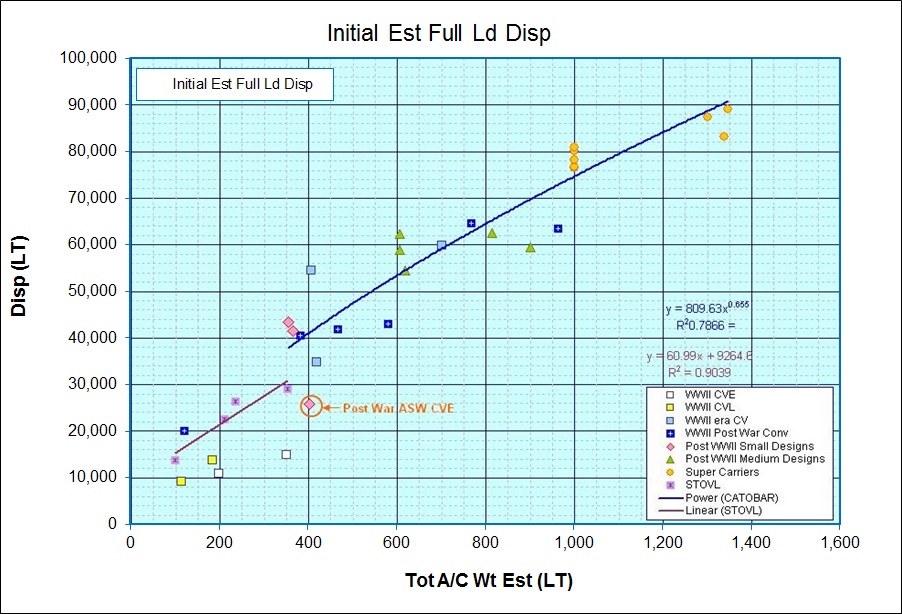
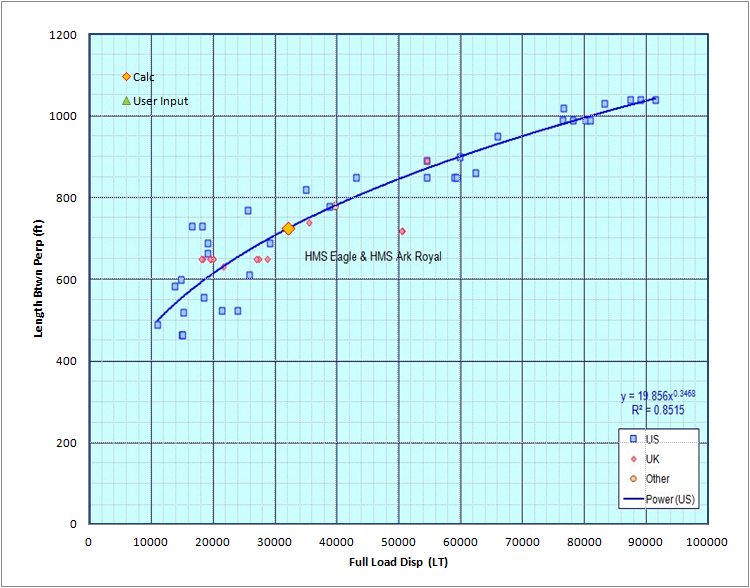
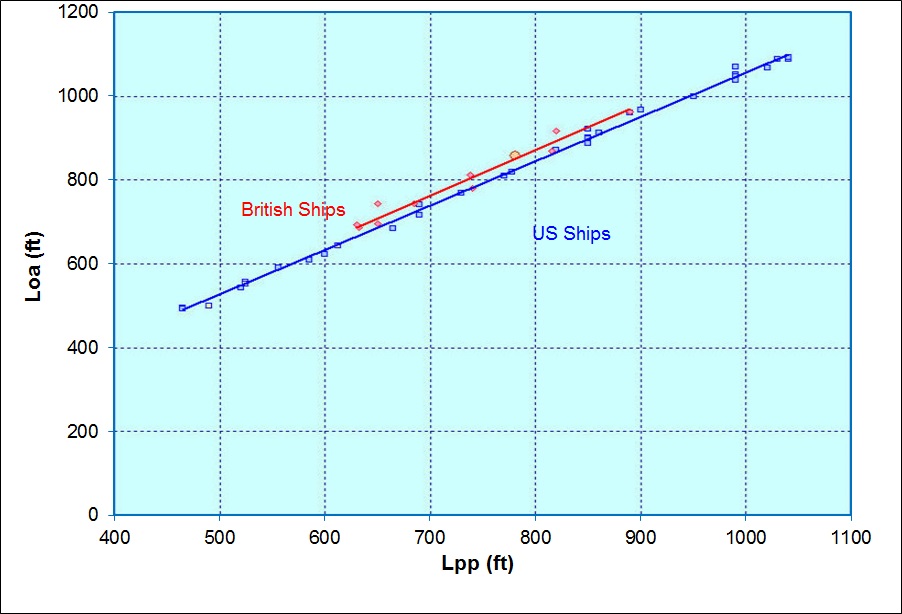
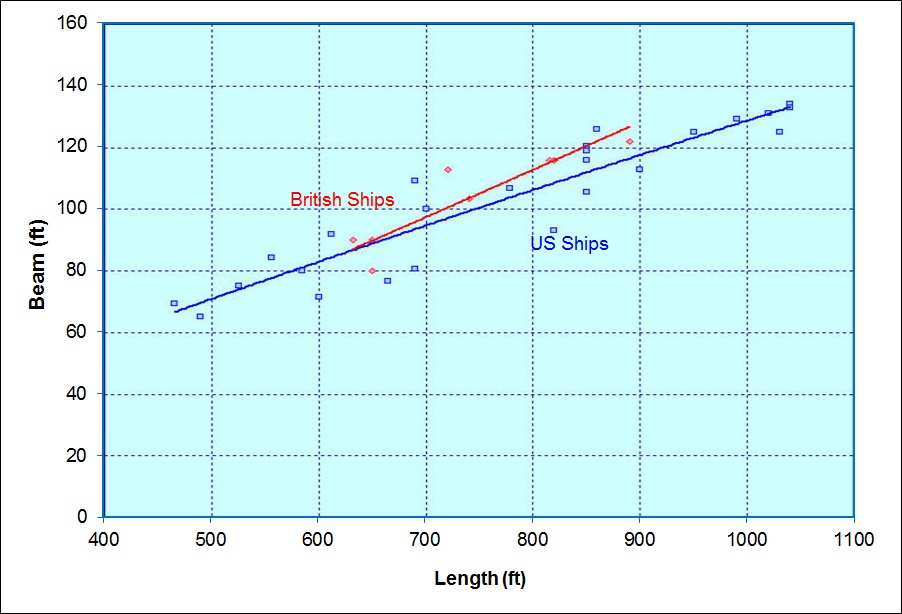
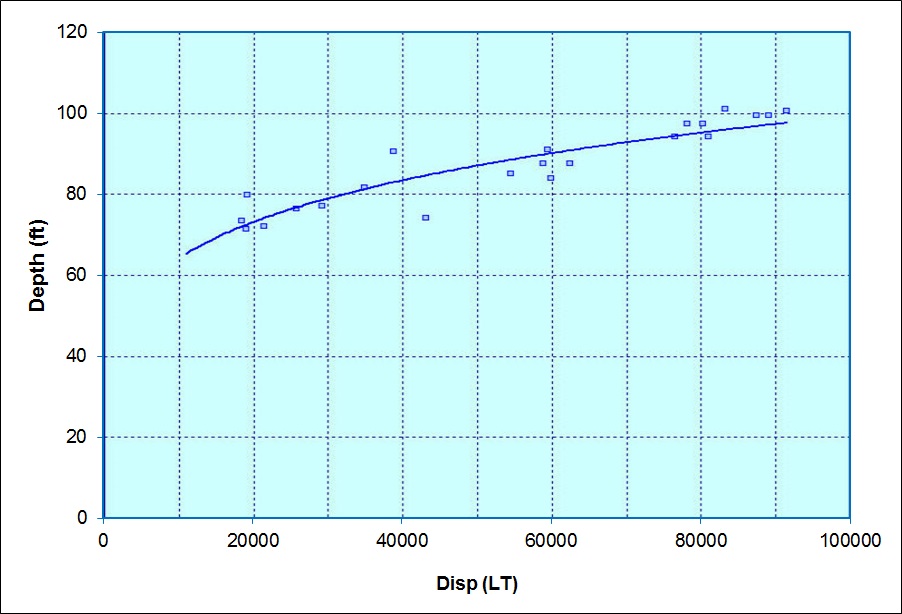
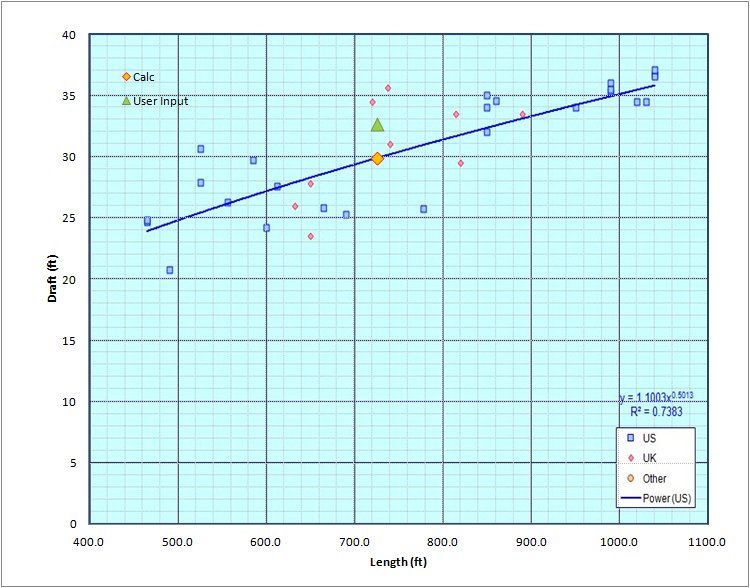
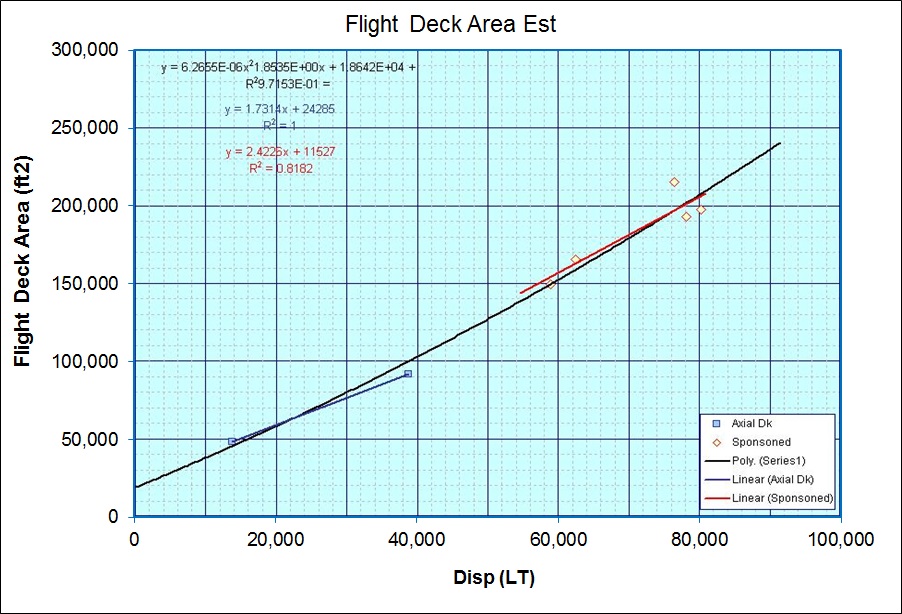
Based on the length estimated above and the intended speed of the
vessel an estimate is also then made of the ship's;
- Block Coefficient (Cb)
- Midship's Coefficient (Cm)
- Prismatic Coefficient (Cp)
- Waterplane Coefficient @ Design Waterline (Cwp)
- Displacement Length Ratio (DLR)
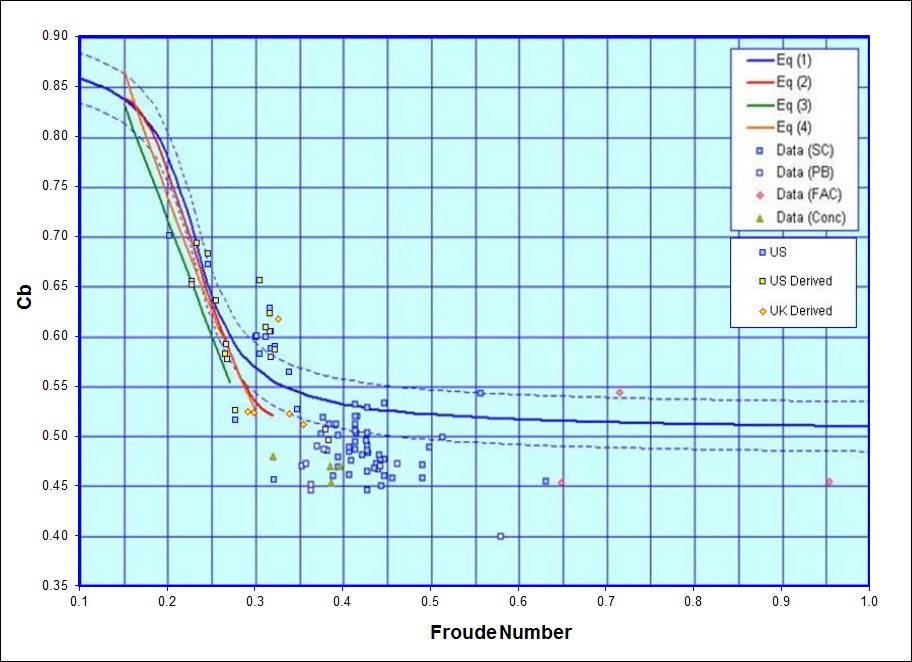
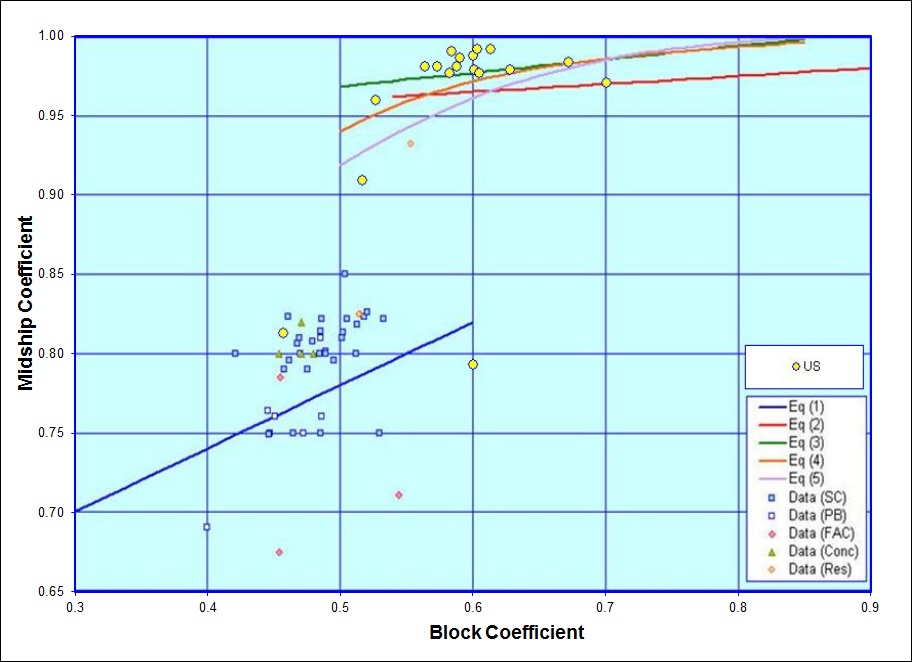
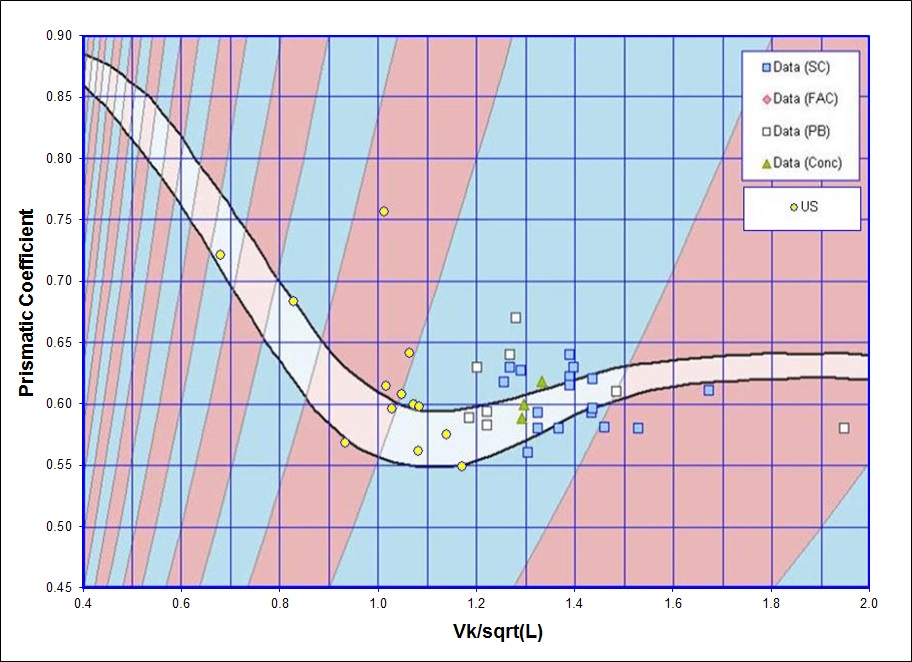
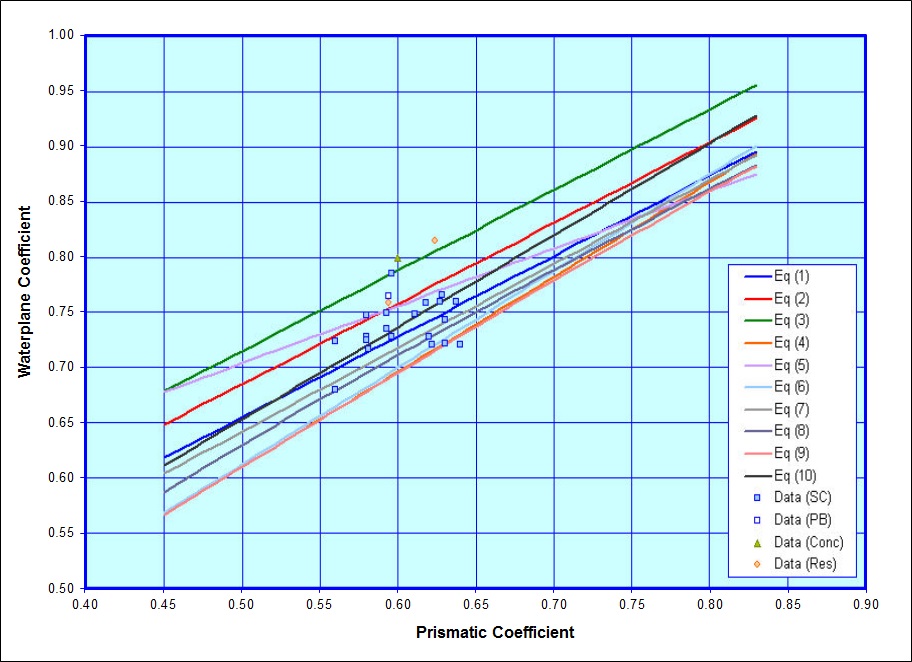
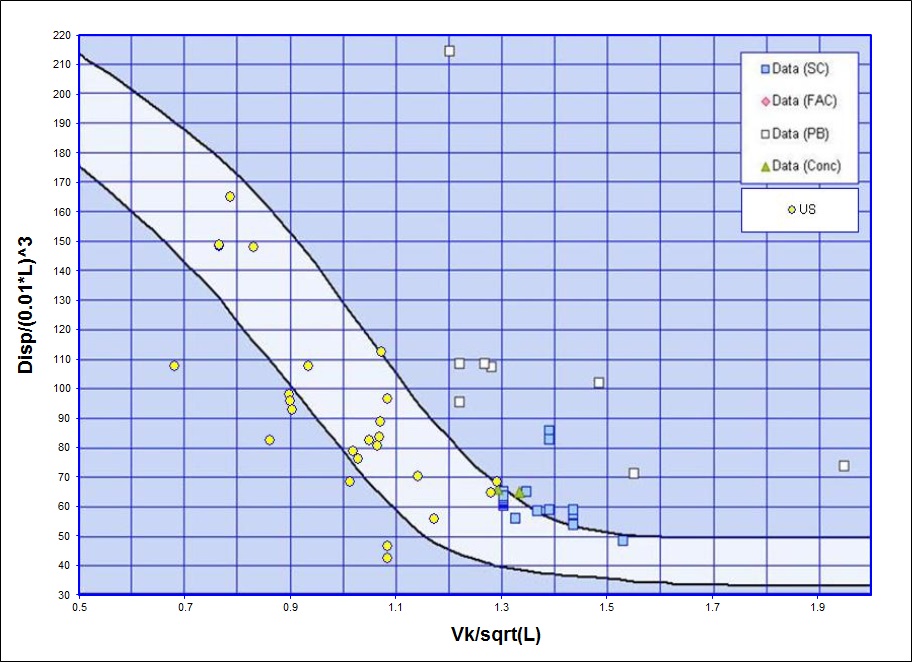
In addition the spreadsheet then calculates a couple additional terms
that get used in calculating some of the weights. The 1st is the
ship's Cubic Number which is equal to Lpp * Bwl * D / 1000. For
conventional ship design this term more or less represents a "shoe box"
that the ship's hull more or less fits within (and often is typically
divided by 1000 to make the numbers smaller and easier to manipulate). However
for ships like aircraft carriers which may have broad flight decks
supported by extensive sponsons that may extend well beyond the
waterline beam of the ship, ship's with the same Cubic Number may have
widely different flight deck sizes and hence Cubic Number may not be
the a suitable measure for discribing ships like this. As such,
I've included two additional terms to hopefully better
relfect carrier configurations.
The 1st is equal to the ship's flight deck area times its depth, and represents a prism (or volume) that the carriers hull fits within. But it still doesn't really give a good differentiation between a smaller ship with large flight deck extension and a larger ship with smaller sponsons and flight deck overhangs, but an overall similar sized flight deck.
As such, I've also tried to develop a second term that I call the "Hullform Parameter". It general itcan be viewed as a rough estimate of a carrier type vessel's internal volume and is equal to the ship's volume below its design waterline plus the volume of a prism formed by an estimate of the ship's design waterline area, its flight deck area, and its freeboard. Although this may sound a little bit convoluted it is relatively easy to calculate or estimate for a new design based on its principle characterisitcs, its block coefficient, waterplane coefficient, and flight deck area, etc.
Specifically, a ship's displcement times the density of sea water (or conversely its Lpp * Bwl * T * Cb) is equal to its underwater hull volume. Additionally a ship's waterplane area coefficient * Lpp * Bwl equals the area of its waterplane, and the average of its waterplane area and it's flight deck area * freeboard is a rough estimate of the volume of the hull above the waterline.
The figures below demonstrate these terms for a notional carrier type hull, where the gray shape represents the ship's actual hull while the green box is a visual representation of the Cubic Number and the Light Blue (Teal) & Red colored shape is a visual representation of the ship's Hullform Parameter, where the Teal colored part represents the above water portion and the Red colored part represents the below water section.
The 1st is equal to the ship's flight deck area times its depth, and represents a prism (or volume) that the carriers hull fits within. But it still doesn't really give a good differentiation between a smaller ship with large flight deck extension and a larger ship with smaller sponsons and flight deck overhangs, but an overall similar sized flight deck.
As such, I've also tried to develop a second term that I call the "Hullform Parameter". It general itcan be viewed as a rough estimate of a carrier type vessel's internal volume and is equal to the ship's volume below its design waterline plus the volume of a prism formed by an estimate of the ship's design waterline area, its flight deck area, and its freeboard. Although this may sound a little bit convoluted it is relatively easy to calculate or estimate for a new design based on its principle characterisitcs, its block coefficient, waterplane coefficient, and flight deck area, etc.
Specifically, a ship's displcement times the density of sea water (or conversely its Lpp * Bwl * T * Cb) is equal to its underwater hull volume. Additionally a ship's waterplane area coefficient * Lpp * Bwl equals the area of its waterplane, and the average of its waterplane area and it's flight deck area * freeboard is a rough estimate of the volume of the hull above the waterline.
The figures below demonstrate these terms for a notional carrier type hull, where the gray shape represents the ship's actual hull while the green box is a visual representation of the Cubic Number and the Light Blue (Teal) & Red colored shape is a visual representation of the ship's Hullform Parameter, where the Teal colored part represents the above water portion and the Red colored part represents the below water section.

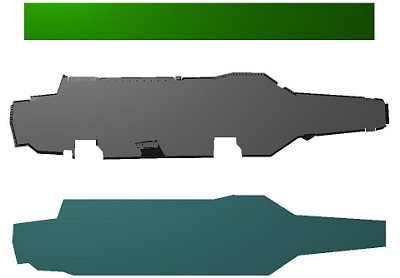
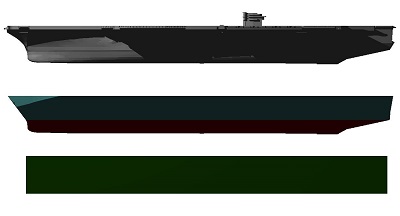

Cubic Number = Lpp * Bwl * T / 1000
Hullform Parameter = Displ * density + Freeboard * (Cwp * Lpp * Bwl + Flight Dk Area) / 2
Hullform Parameter = Displ * density + Freeboard * (Cwp * Lpp * Bwl + Flight Dk Area) / 2
= Disp * 35 + (D - T) * (Cwp * Lpp * Bwl + Flight Deck Area) / 2
or = Cb * (Lpp * Bwl * T) + (D - T) * (Cwp * Lpp * Bwl + Flight Deck Area) / 2
[depending on what info you have available]
This document maintained by PFJN@mnvdet.com.